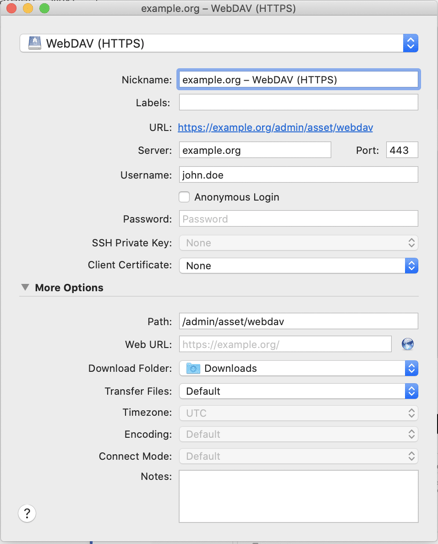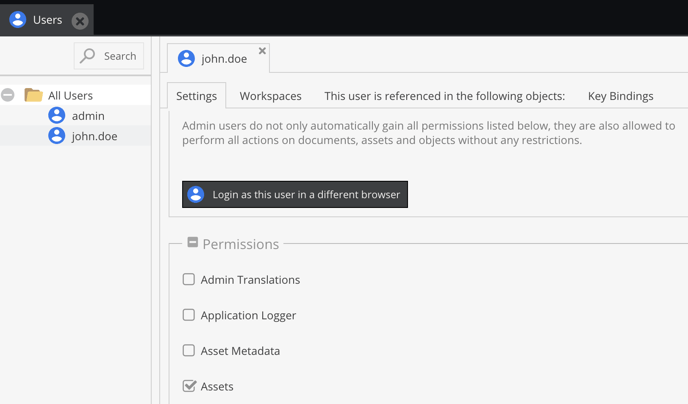File access via WebDAV - with Pimcore Asset Management
If files are to be exchanged via the Internet, the WebDAV protocol (WebDAV: Web-based Distributed Authoring and Versioning) is a good choice.
The WebDAV protocol is particularly convenient because shared directories can be mounted by authorized users like an online hard drive and files and entire directories can be copied back and forth between the workstation and the WebDAV volume using drag & drop.
Technically, WebDAV is an extension of the HTTP/1.1 protocol. Just like a web browser, it uses ports 80 or 443. In this way, file transfer is possible without problems even if a firewall is used, as the ports mentioned are usually not blocked. The WebDAV protocol is popular with system administrators: since no further ports need to be opened for file sharing, it saves essential work steps and avoids additional security setups.
Since Basic access authentication (HTTP Basic Auth) is used for authentication, we strongly recommend using only secured HTTP connections (HTTPS). Without HTTPS, the access data can be readout of the connection.
Setting up a connection to Pimcore via WebDAV
WebDAV is set up by default. To set up a connection to Pimcore via WebDAV, you must enter the following path in your client software (replace the domain with your domain):
Access rights to access Pimcore via WebDAV
The following access rights must be configured per user or role.
1. Access rights for assets must be released:
2. Users must be granted access to the respective directories to which they are to have access.
For access to directories via WebDAV, only the access rights "View, Publish, Delete, Rename and Create" are evaluated. All other settings have no relevance for WebDAV and are used for accessing assets via web interface.
Client software for working with WebDAV
As nice as it reads in theory, in practice, a faulty implementation of the WebDAV protocol in the client software often proves to be a pitfall. SabreDav, an open-source WebDAV server, lists known bugs of various client implementations here: http://sabre.io/dav/clients/.
In practice, Cyberduck, a free WebDAV client https://cyberduck.io/, has proven itself. In conjunction with the inexpensive utility Mountain Duck https://mountainduck.io/, drives can be mounted on the desktop of a Macintosh or Windows client.